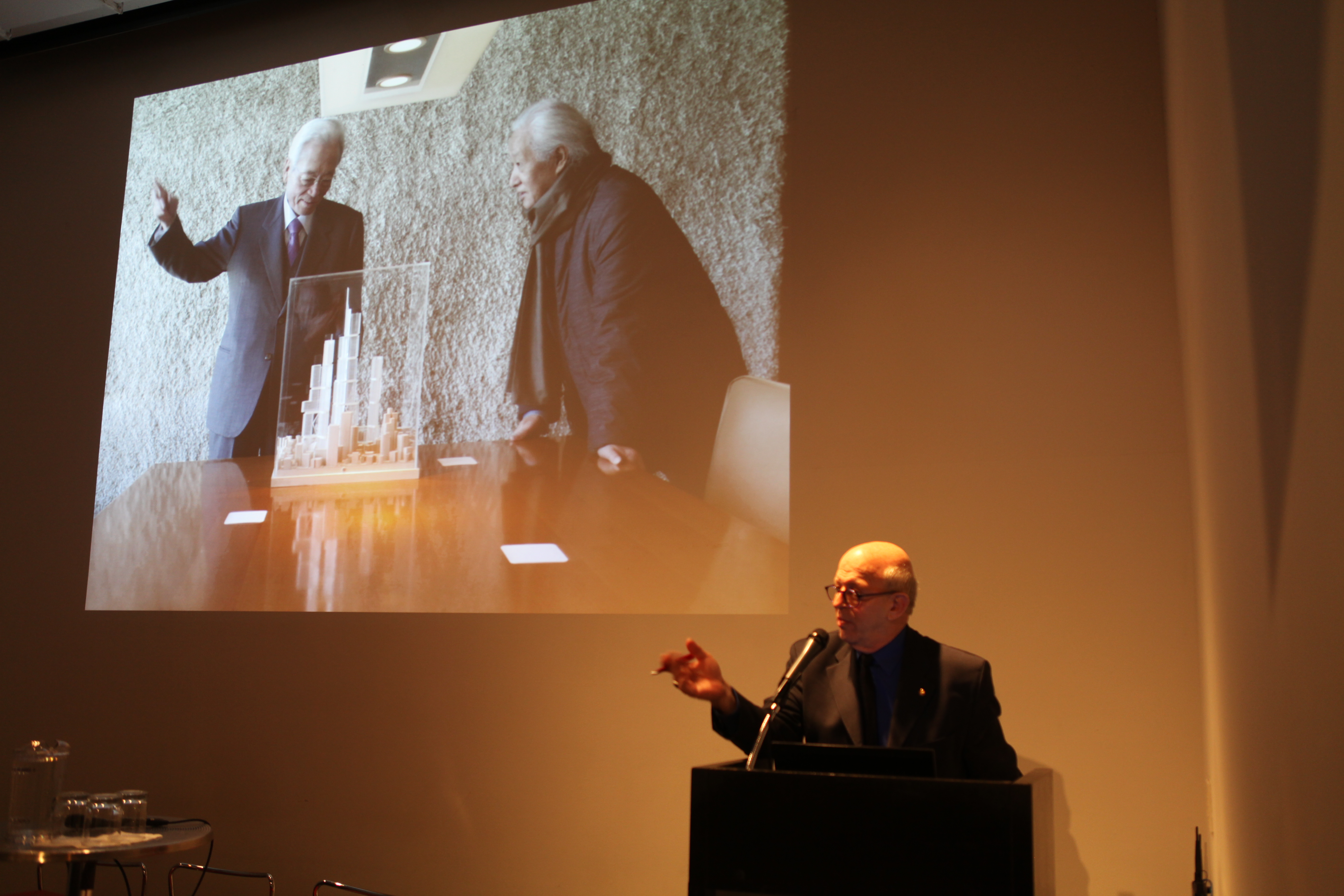by James Way
The “Practical Utopias” exhibition programming concluded with a panel that discussed public space in Asia’s particularly dense cities. Curator Jonathan Solomon, AIA, recapped the exhibition’s themes, including how public and semi-public spaces are made and used, from shopping malls to elevated walkways as in transit oriented development (TOD) networked cities in Hong Kong and Tokyo.
David Malott, AIA, principal at Kohn Pedersen Fox Associates, cautioned that public space is not always as obvious as we think. Like many Asian cities, Tokyo’s multi-layered approach disperses public spaces throughout the city via TODs. Some transit stations provide easy access to public plazas feeding into dense districts rich with street life. Others connect directly into mixed-use retail and entertainment podia capped by office and residential towers with public amenities, such as museums and green roofs, at their tops.
Beijing, too, has a lively public life in its streets and parks, but increased foreign commissions have brought a new sense of public space. There is open ground around the CCTV headquarters, designed by OMA, even if the government makes the space publicly inaccessible. Steven Holl Architects’ Vanke Centre and Linked Hybrid projects hover above the ground, leaving it open for recreational uses. Ironically, Jeffrey Johnson, founding director of the China Megacities Lab at Columbia University, pointed out that the latter’s developer had to build a fence around the site to encourage condo sales to a society accustomed to gated enclaves.
The Olympics, which lends a particularly public appearance to the host country, still resonates in China, both in the physical edifices and impressions of national promotion that remain when the Games are over. Jennifer Wen Ma, one of the collaborators who designed Beijing’s opening ceremonies, spoke about the noteworthy spectacle as a broad-stroke portrayal of 400 million residents, a unified public that doesn’t really exist. After the Games, Ma programmed a public art piece at the Water Cube that projects colors depicting the mood of the city’s residents using a Twitter-like technology and light projection. This brought up the inevitable questions of physical vs. virtual space vis-a-vis technology during the Q&A.
Whether public space is to be moved through, met in, surveyed, controlled, or “occupied,” it cannot be taken for granted. One of the loftier and more tenacious views came from the panel’s lone governmental representative. “Public space is an opportunity to create public trust” only if it is always open to everyone, proclaimed Alexandros Washburn, Assoc. AIA, former chief urban designer at the NYC Department of City Planning. He warned that people tend to aggregate space, so it is up to users and the law to appropriate and protect it.
James Way, Assoc. AIA, Marketing Manager at Dattner Architects, has contributed to Tokyo Art Beat, The Architect’s Newspaper, and eOculus.
Event: Asian Cities and the Future of Public Space
Location: Center for Architecture, 08.01.14
Speakers: Jeffrey Johnson, Founding Director, China Megacities Lab, Columbia University; David Malott, AIA, Principal, Kohn Pedersen Fox Associates; Jonathan Solomon, AIA, Associate Dean, School of Architecture, Syracuse University; and curator of “Practical Utopias”; Jennifer Wen Ma, Artist and Core Creative Team Member, Beijing 2008 Summer Olympics Games and Paraolympic Games Opening and Closing Ceremonies; Alexandros Washburn, Assoc. AIA, Former Chief Urban Designer, New York City Department of City Planning; Lance Jay Brown, FAIA, AIANY 2014 President (moderator)
Organized by: Center for Architecture







